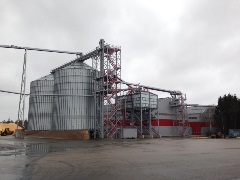Taking the Scandinavian bioenergy model to Brussels
by
User Not Found
Mar 03, 2016
 I recently returned from Svebio’s Pellets 2016 conference in Uddevalla, Sweden, where I had the opportunity to meet several new faces from Scandinavian, Baltic and Russian companies. It was a fascinating conference, not simply thanks to the presentations given but also due to the conversations I had with various market stakeholders.
I recently returned from Svebio’s Pellets 2016 conference in Uddevalla, Sweden, where I had the opportunity to meet several new faces from Scandinavian, Baltic and Russian companies. It was a fascinating conference, not simply thanks to the presentations given but also due to the conversations I had with various market stakeholders.
Despite Sweden and Finland being members of the European Union, I found it interesting during the conference’s international day that several Scandinavian stakeholders seemed to be broadly unaware of the struggle the biomass industry is facing in Brussels. Those participants were shocked that there would be any opposition to wood pellets – be it from environmental NGOs, other forest industries, or the European media. Burning wood for energy has been part of Scandinavian culture and industry for as long as people can remember. It is inherently sustainable, as is proven by the age of the industry, and it is supported by policymakers and industry alike.
The Scandinavian model, surely, seems a perfect example to take to Brussels then – a detail which has not gone unnoticed by the larger biomass entities currently under scrutiny. Both Drax and Enviva (among others) were present at the Pellets 2016 conference for the first time. And USIPA, WPAC and AEBIOM (in conjunction with all the large pellet producers) are doing a fantastic job of trying to bring together the pellet producing industry as one voice in Brussels.
However, engaging these producers to join forces with the rest of the global biomass industry in a lobbying effort could be challenging. The second group of Scandinavian stakeholders I encountered was made up of producers who are, frankly, angry at North American suppliers for stepping on their toes and edging them out of a share of the export market.
Sweden’s pellet production market in particular is showing signs of trouble. There have been several mill closures in recent years, and consolidations among other producers as demand for heating pellets in the country has fallen. This is despite Sweden having a huge forestry potential, and many mills having the capacity to produce much higher volumes for export if demand were forthcoming. Sweden only exports around 120kt/y (though in 2015 this was higher – in Jan-Oct alone the country had exported 150kt) of its ~2Mt/y capacity. But the country has struggled to compete with the economies of scale and lower fibre costs of the larger North American producers, which have won out in terms of available volume and price.
Perhaps these Scandinavian (and potentially other European producers) have a point though. If the pellet industry came together for the good of the market and succeeded in winning support from European policymakers, who would this benefit? Would producers on both sides of the Atlantic benefit equally?
There are concerns that by the time the market realises it needs additional volumes from Europe, too many of the region’s potential suppliers will have been forced out of the market. What will happen if the North American demand side suddenly materialises? Will there be sufficient fibre to meet all demand globally, a risk often cited by cynics, or will deliveries start being diverted away from Europe?
I don’t disagree that a show of solidarity among the biomass industry is enormously important for the future of the market. But I wonder if, once the sustainability battle is won (which we all hope it will be), large companies on both the supply and demand sides will continue to preserve the businesses of the smaller European producers which were relied on to help the industry win?